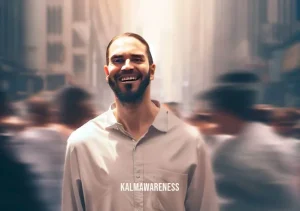Breathing and Meditation: Unveiling Some Meditative Exercises
Breathing and meditation have always been tightly intertwined. The very essence of our life, breath, is often the anchor of our meditation practices. In today’s hectic world, people are constantly seeking ways to achieve a sense of calm and tranquility. And, like some meditative exercises, focusing on our breath can provide that sanctuary of peace. But meditation isn’t just about breathing; it encompasses a variety of techniques that range from visualization to body scans. Let’s embark on a journey to understand the diverse avenues of meditation, setting the foundation for deeper insights in the segments that follow.
The Core Essence of Meditation
Meditation, as described here, is the practice of attaining a peaceful state of mind wherein thoughts are not occupied by worry. Over time, numerous practices have emerged, each offering unique benefits and methods to achieve mental serenity. These exercises are designed not only to calm the mind but also to strengthen our inner spirit.
Breath as the Starting Point
Breathing, a fundamental aspect of our existence, is often the starting point of many meditation practices. When was the last time you truly noticed your breath? Felt the inhalation and exhalation? Breathing exercises help ground us, reminding us of the present moment. They can be as simple as taking deep breaths or more structured like pranayama practices. Interestingly, you can even meditate lying down, allowing your breath to be your guide.
Visualization and Its Power
Visualization is another potent technique in the meditative world. By imagining serene landscapes, light, or even energy fields, we can transport our minds to a place of calm. This practice how we get deep so fast, taking us away from the chaos of daily life. Through visualization, we can also manifest our desires, healing energies, or even simple gratitude for life’s blessings, one for each blessed day.
Mantras and Their Resonance
The power of sound and resonance cannot be underestimated. Mantras, often repeated words or phrases, are used to shift our mental state. They are tools that, when chanted or even thought of, can elevate our consciousness. Whether it’s the simple “Om” or more intricate mantras, they act as anchors, pulling our wandering minds back to the center. And for those just beginning their journey, guides like Jack Kornfield’s meditation for beginners can be invaluable.
The Body and Mind Connection
The body and mind are undeniably linked. Body scan meditation techniques encourage us to focus on different parts of our body, acknowledging sensations and releasing tension. This not only helps in relaxation but also fosters a deep connection with oneself. A unique aspect of this is mindful movement sleep, where one combines mindfulness with gentle movements to relax before sleep.
Another emerging practice is mindful hypnobirthing, which integrates mindfulness techniques to support childbirth. And for those seeking a blend of physical postures with meditation, rouse yoga might be the ideal choice.
Mindfulness: The Art of Being Present
Above all, the practice of mindfulness stands tall. It’s about being in the present moment, fully aware, and without judgment. It’s a reminder to be in the now, a practice that can be as simple as teenagers walking mindfully, feeling every step, every breath.
“Mindfulness is the aware, balanced acceptance of the present experience. It isn’t more complicated than that. It is opening to or receiving the present moment, pleasant or unpleasant, just as it is, without either clinging to it or rejecting it.” – Sylvia Boorstein
In a world where we’re often racing against time, these practices serve as reminders to slow down, breathe, and truly live. The beauty of meditation lies in its simplicity and its ability to be tailored to individual needs.
But this is just the beginning. In the next segment, we will delve deeper into each practice, offering insights, techniques, and the benefits they bring. Whether you’re a novice seeking meditation made simple or someone looking to deepen their practice,

Expanding Horizons: Further Exploration of Meditative Exercises
Meditative practices have historically been revered for their potential to transform our mental and emotional landscape. While the foundational aspects of meditation—like focusing on the breath or practicing mindfulness—may seem simplistic, a deeper exploration unveils a vast realm of exercises. In this chapter, we’ll dive into more specialized practices that underscore the importance of such exercises in enhancing overall well-being.
The Elements of Meditation
Meditation is multifaceted. Let’s break down some core elements:
- Emphasis on Presence: Central to almost all practices, the essence of being present promotes a deeper connection with oneself.
- Guidance: While some prefer silence, others lean on guided practices for a structured experience.
- Physicality: Not always restricted to the mind, some meditative exercises integrate physical movements for a holistic experience, such as touching specific body parts to evoke awareness.
- Consistency: Like any skill, the more you practice meditation, the more profound its effects. It’s a sustainable form of self-care.
- Adaptability: The beauty of meditation lies in its adaptability. Techniques can be tailored to individual preferences and needs.
Gazing as a Meditation Tool
Mirror gazing, for instance, is an ancient practice that offers numerous spiritual benefits. Gazing at one’s reflection with intention can lead to profound self-awareness, inner peace, and even transcendental experiences. Such exercises underscore the idea that meditation isn’t limited to traditional sitting postures or chanting.
Beyond Common Myths
There are many misconceptions about meditation. For instance, many believe that meditation is about “emptying the mind.” In reality, it’s about observing thoughts without getting attached. Also, while tranquility is often associated with meditation, it’s not always the immediate result. For some, meditation can bring up unresolved emotions or thoughts, demanding patience and persistence.
A Glimpse into Varied Techniques: Table Overview
| Technique | Primary Focus | Beneficial For |
|---|---|---|
| Mantra Meditation | Repetition of a specific word or phrase | Enhancing focus, reducing stress |
| Guided Visualization | Visualization of peaceful scenarios | Easing anxiety, cultivating positivity |
| Body Scan | Awareness of bodily sensations | Relaxation, releasing tension |
| Movement-Based | Incorporation of physical movements | Physical and mental well-being |
| Element-Centered Practices | Focus on specific elements (e.g., fire, water) | Connection with nature, grounding |
Strengthening the Mind-Heart Connection
The heart and mind are deeply interconnected. Emotions influence our thoughts, and vice versa. Techniques such as training the mind to be stronger than feelings can be pivotal in achieving emotional resilience. Such practices not only empower individuals but also promote a deep sense of inner harmony.
Embracing Meditation in Daily Routines
One doesn’t need an isolated environment or dedicated hours for meditation. It’s about incorporating it into daily life. Simple acts like being present while drinking a cup of tea, taking a short walking meditation break, or practicing a few minutes of deep breathing can introduce calmness in everyday chaos.
In conclusion, meditative exercises extend far beyond popular perceptions. They offer a wide range of techniques tailored for individual needs, proving their adaptability and relevance. As we proceed, the next chapter will delve into the science behind meditation, unraveling how these exercises impact our brain and body. Continue reading to grasp a deeper understanding of the transformative power of meditation.

Inspired Journeys: The Transformative Power of Meditative Exercises
Meditative exercises are more than just practices; they’re transformative journeys. Throughout history, countless individuals have turned to these exercises during challenging times, seeking solace, understanding, and, most importantly, hope. This chapter delves into the inspirational side of meditation, presenting quotes, real-life examples, and insights that resonate with the heart and soul.
Finding Hope in Darkness
One of the most compelling stories of meditation’s transformative power is that of Sarah. Struggling with depression and feelings of isolation, she discovered gratitude meditation for sleep. This simple nightly ritual of recounting blessings changed her perspective on life, helping her find light in the darkest of times.
“The soul always knows what to do to heal itself. The challenge is to silence the mind.” – Caroline Myss
Sarah’s story isn’t unique. Many have found solace in similar exercises, embracing meditation as a beacon of hope.
Meditative Exercises: A Source of Inner Strength
Jane, a business executive, felt overwhelmed by the demands of her career. The stress was affecting her health and relationships. That’s when she stumbled upon how to stabilize her mind using meditative exercises. This practice not only rejuvenated her mentally but also instilled a sense of purpose.
“In the midst of movement and chaos, keep stillness inside of you.” – Deepak Chopra
With renewed energy and clarity, Jane transformed her professional life, aligning it more with her values.
Unraveling the Depths of Self
Tom, an artist grappling with a creative block, discovered the profound insights meditation offered. Through mirror gazing and its spiritual benefits, he reconnected with his inner self, igniting a surge of inspiration.
“Meditation is the tongue of the soul and the language of our spirit.” – Jeremy Taylor
The artworks he created post this experience were a testament to the depths meditation can reach, helping individuals rediscover their essence.
Breaking Boundaries with Meditation
Mia, an athlete, was on the verge of quitting her sport due to a severe injury. During her recovery, she explored mindful movement exercises to maintain her physical and mental health. What she found was more than just a coping mechanism; it was a way to transcend her physical limitations.
“Do not let the behavior of others destroy your inner peace.” – Dalai Lama
Mia returned to her sport with unparalleled vigor, proving that with the right mindset and tools, boundaries can indeed be broken.
The Universality of Meditative Inspiration
These stories underscore a crucial point: regardless of backgrounds, challenges, or aspirations, meditative exercises offer a universal solution. They are a reservoir of hope, strength, and inspiration, awaiting anyone willing to dive in.
“Quiet the mind, and the soul will speak.” – Ma Jaya Sati Bhagavati
It’s essential to keep in mind that these exercises are not about achieving a state of eternal bliss or a life devoid of challenges. Instead, they equip us with the tools to navigate life’s storms with grace, resilience, and an undying spirit of hope.
In the chapters that have unfolded, we’ve explored the varied facets of meditation—from its techniques to its transformative tales of hope. As we progress, the next segment will focus on the physiological and psychological benefits of these exercises. Delve deeper to understand the science behind meditation’s magic. Continue reading to unveil the profound impacts of these ancient practices on our modern lives.

Delving Deeper: The Anatomy of Meditative Exercises
Meditative practices, over the ages, have garnered respect and reverence for their transformative powers. While the preceding chapters provided a glimpse into the vast world of meditation, this segment will delve deeper, dissecting and analyzing ‘like some meditative exercises’ to illuminate their multifaceted nature. Using structured lists and bullet points, we aim to offer a lucid breakdown, simplifying complex concepts related to these practices.
Categories of Meditative Exercises
To grasp the comprehensive scope of meditative exercises, it’s pivotal to categorize them based on their primary focus:
Concentration Meditation:
- Focuses on a single point.
- This could involve following the breath, reciting a mantra, or listening to a guided meditation.
- Aids in refining attention and building mental stamina.
Mindfulness Meditation:
- Encourages acknowledgment of wandering thoughts.
- Develops an awareness of how these thoughts interlink, helping in training the mind to stay grounded.
Movement-Based Meditation:
- Involves movement, yet the focus remains on mindfulness and presence.
- Examples include yoga or tai chi.
Transcendental Meditation:
- A specific form that involves the repetition of a mantra in a specific way.
- Aims to rise above one’s current state of being.
Loving-kindness Meditation:
- Intended to nurture compassion.
- Involves directing well-wishes and love towards oneself and others.
Essential Components of Meditative Exercises
Meditative practices, though diverse, often contain recurring themes or components:
- Focused Attention: Almost all exercises emphasize maintaining focus, whether it’s on breath, movement, or a mantra.
- Open Monitoring: Developing an awareness of one’s surroundings, thoughts, and feelings without getting attached.
- Intention Setting: Many practices start with setting an intention, which serves as a guide for the meditation session.
- Acceptance and Non-Judgment: Core to mindfulness practices, these aspects train the mind to observe without forming opinions.
Benefits: A Quick Snapshot
While the holistic advantages of meditative exercises are vast, here’s a succinct breakdown:
- Physical:
- Enhanced relaxation, leading to reduced blood pressure.
- Improved sleep patterns, especially through practices like gratitude meditation for sleep.
- Boosted immune system functionality.
- Mental:
- Heightened focus and concentration.
- Reduction in stress and anxiety levels.
- Improved emotional well-being and resilience.
- Spiritual:
- Deeper self-awareness and introspection.
- Enhanced connection to one’s surroundings and the universe.
- Growth in compassion and empathy.
Common Misconceptions
It’s also crucial to dispel prevalent myths:
- Only for the Spiritually Inclined: Meditation is universal and isn’t bound by religious or spiritual affiliations.
- Requires Hours of Commitment: Even a few minutes daily can yield results. It’s consistency that counts.
- One Must Achieve a Void Mind: The goal isn’t an empty mind but an observing one.
With this comprehensive breakdown, the intricate world of meditation becomes more accessible and less daunting. These practices, rooted in ancient wisdom, hold relevance even in today’s fast-paced world, offering solace, insight, and transformation.
As we gear up for the concluding chapter, anticipate a synthesis of all the insights gathered so far, coupled with actionable takeaways to integrate these profound exercises into daily life. The next chapter promises to be a culmination of this enriching journey, guiding you towards a holistic understanding of meditative exercises. Continue reading to bridge the gap between knowledge and practice.

Culmination: Reflecting on the World of Meditative Exercises
Our exploration of the vast and enriching domain of meditative exercises has been nothing short of enlightening. From the foundational principles to the deeply personal stories of transformation, we’ve traversed the myriad facets of this ancient practice. As we prepare to wrap up this enlightening journey, let’s pause, reflect, and imbibe the essence of what we’ve learned.
Gleaning Insights from Our Exploration
Meditative exercises, as we’ve discovered, are much more than just techniques to calm the mind. They are tools of transformation, avenues of self-discovery, and catalysts for holistic well-being. Whether you’re looking to enhance concentration, forge a deeper connection with your inner self, or simply find moments of tranquility in the chaos, these exercises offer a treasure trove of benefits.
A quick recap of our journey:
- Foundational Principles: We delved into the core essence of meditative exercises, emphasizing the importance of breath, presence, and mindfulness.
- Inspiring Journeys: Through heartwarming tales, we witnessed the transformative power of meditation, exemplifying hope and resilience.
- Structured Breakdown: With structured lists and tables, we offered a detailed overview, facilitating a comprehensive understanding of various practices.
- Holistic Benefits: The myriad physical, mental, and spiritual benefits of meditation were showcased, reinforcing the universality of these practices.
Bridging Knowledge with Practice
Understanding the theory behind meditation is just one side of the coin. The true magic unfolds when we incorporate these insights into our daily lives. To aid in this transition:
- Begin with small steps. Start with just a few minutes daily and gradually increase the duration.
- Explore diverse practices. What resonates with one person might differ for another. The key is to find what aligns with your spirit. For instance, if visual techniques appeal to you, guided visualization might be a great starting point.
- Stay consistent. Like any skill, meditation flourishes with practice.
A Heartfelt Thanks and What Lies Ahead
Dear reader, we’re profoundly grateful for your time and commitment to this journey. Your quest for knowledge and self-improvement is commendable, and we’re honored to be a part of it.
We hope that this exploration has not only enhanced your understanding but also kindled a desire to delve even deeper. As you continue your exploration, we invite you to revisit previous sections for clarity, or better yet, explore other insightful content on KalmAwareness. Our repository is brimming with resources, ensuring you’re always one step closer to enlightenment.
“Every new beginning comes from some other beginning’s end.” – Seneca
As we conclude this chapter, remember that it’s not the end but rather a new beginning in your meditative journey. And as always, we promise to bring more insightful content in our future editions, guiding you further on this path of self-discovery.
Continue exploring, keep meditating, and stay inspired!





